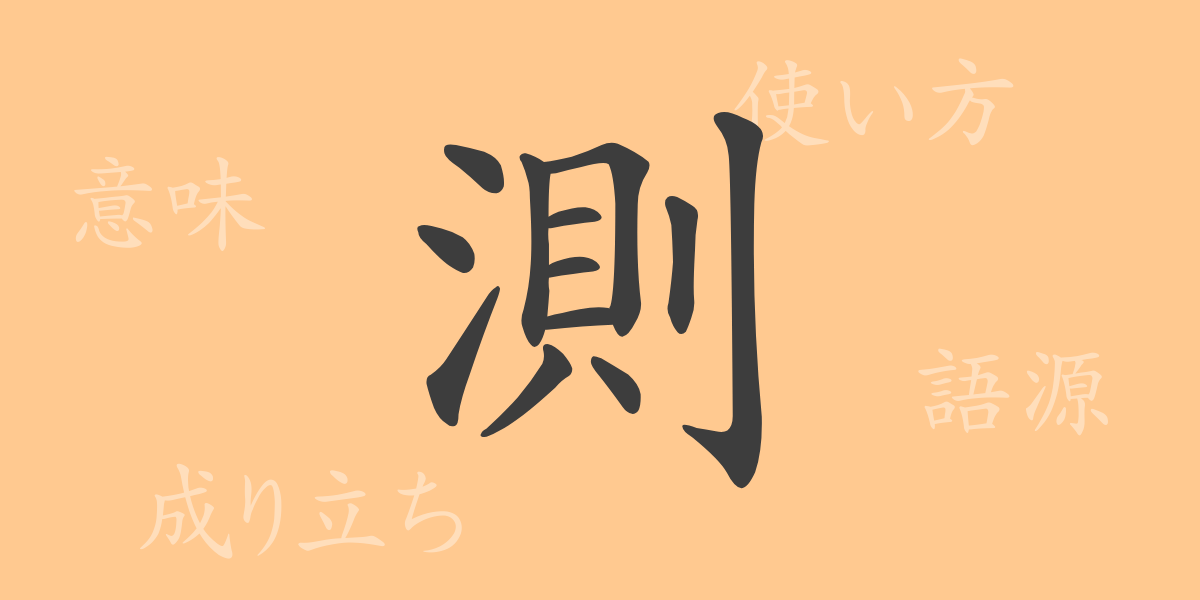Japanese culture is deeply intertwined with Kanji characters. Among them, the Kanji “(測)” is frequently used in daily life, yet its deep meanings and origins are not widely known. This article delves into the charm of the Kanji “(測)”, exploring its formation, meaning, usage, readings, and idiomatic expressions where it is used.
Origin of “(測)” (そく – Soku)
The Kanji “(測)” originated in ancient China. It consists of the character “(土)” meaning land and “(氵)” representing water flow. Originally, it referred to measuring land near water, and broadly came to mean measurement and estimation. This etymology illustrates the historical background of Kanji and its close relationship with people’s lives.
Meaning and Usage of “(測)” (そく – Soku)
The Kanji “(測)” signifies “to measure”, “to estimate”, or “to gauge”. Particularly in fields like science and engineering, it refers to accurately understanding physical dimensions and quantities. In psychology and sociology, it is used to analyze human psychology or social phenomena.
Readings, Stroke Count, and Radical of “(測)” (そく – Soku)
The Kanji “(測)” is one of the basic Kanji used in everyday life.
- Readings: On’yomi (音読み) ‘ソク’ (soku), Kun’yomi (訓読み) ‘はか.る’ (haka.ru)
- Stroke Count: It consists of a total of 12 strokes.
- Radical: The radical is “水” (みず) or “氵” (さんずい).
Idioms and Proverbs Using “(測)” (そく – Soku) and Their Meanings
There are numerous idiomatic expressions and proverbs in Japanese that include “(測)”. For example, “(測量)” refers to measuring the dimensions of land or space, “(推測)” means deducing conclusions from clues, and “(測定)” involves accurately determining measurements or numerical values. These expressions are commonly used in daily life and business scenarios.
Conclusion on “(測)” (そく – Soku)
The Kanji “(測)” spans a wide range of meanings from the concrete act of measuring land near water to the abstract concept of measuring quantities or extents of things. As a commonly used Kanji in Japan, it is employed in diverse contexts from scientific measurements to gauging human emotions. This exemplifies how a single Kanji character encompasses various meanings, contributing to the richness of the Japanese language.

























